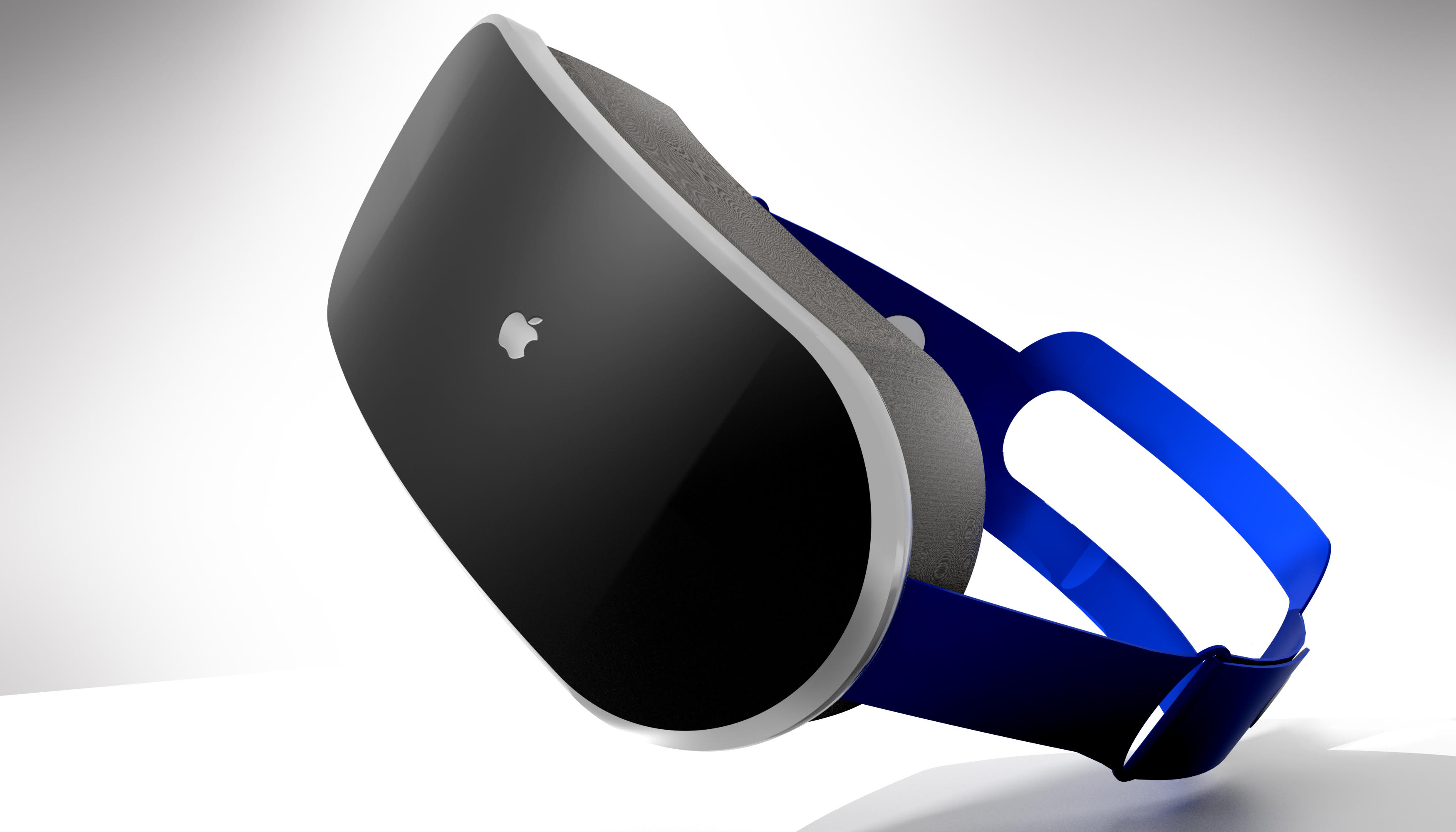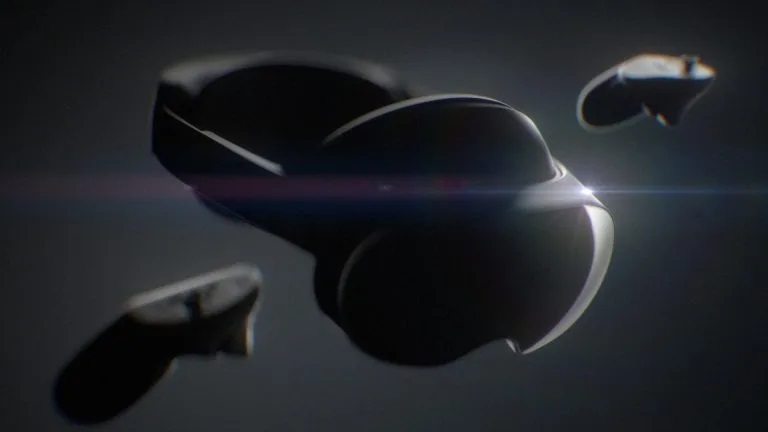Apple's AR/VR headset is coming — and it's going right after Oculus' crown
Apple's new mixed headset will be the most talked about gadget of 2022

Update: While Apple may be going after Oculus Quest 2 with its headset, it' won't be joining Facebook in the metaverse. Apparently that whole concept is "off limits".
On paper, the iPhone 14 is an easy pick for Apple’s most important product of 2022, but it won't be. Yes, the iPhone still accounts for about half of the company’s revenue, and big things are expected from the new iPhones next year.
If you’ve been following the iPhone 14 rumors, the mini model could be going away in favor of a new 6.7-inch iPhone 14 Max. And the iPhone 14 Pro models could be ditching the dreaded notch in favor of a punch hole display.
In addition, the iPhone 14 may be the first iPhone to ever embrace USB-C connectivity, and we’re hearing that the main camera could be getting a big upgrade from 12 megapixels to 48MP. That’s a lot to chew on.
But I’m telling you right now that none of that matters, at least when you consider that Apple is expected to enter an entirely new category with its first Apple AR/VR headset. And it will be going right after Meta (formerly Oculus) and its lineup of headsets.
"The importance of Apple’s entry into a new product category cannot be understated," says Avi Greengart, founder of Techsponential. "Apple’s success in reinventing nascent product categories, bringing them into its ecosystem, and making them mainstream brings unique attention from both consumers and application developers."
Apple’s success in reinventing nascent product categories, bringing them into its ecosystem, and making them mainstream brings unique attention from both consumers and application developers.
Avi Greengart, Techsponential
Based on multiple reports and leaks, Apple’s mixed reality device has the potential to send shockwaves through the tech industry — and also make the likes of Meta (formerly Facebook with its Oculus headset business) nervous.
For one, Apple is reportedly developing its own silicon for its mixed reality headset with serious power. In fact, Apple analyst Ming-Chi Kuo says that the "higher-end processor will have similar computing power as the M1 for Mac." There’s reportedly a lower-end chip, too, for "sensor-related computing."
Sign up to get the BEST of Tom's Guide direct to your inbox.
Get instant access to breaking news, the hottest reviews, great deals and helpful tips.
In addition, unlike the current Meta Quest 2, Apple’s mixed reality headset will deliver both AR and VR experiences, and it will apparently will be very light at 300 to 400 grams. The Quest 2, which is our current best VR headset, weighs 532 grams.
Other rumored specs include dual 4K microLED displays, Wi-Fi 6E support, 15 optical modules and eye tracking. Plus, you may not even need to use controllers, as the Apple AR/VR headset will reportedly track hand movements.
But the success or failure of the Apple headset will not be based on specs or features.
"The biggest thing that Apple can bring to AR and VR is clarity of purpose and design," said Greengart. "What problems does having a head-mounted display solve? How often and in what circumstances will you wear it?"
Apple has a head start with fitness tracking and health with its Apple Watch 7 and Apple Fitness Plus service, and it would be a no-brainer for Apple to integrate both of those products into its AR and VR headset.
Also, don’t forget that Apple has strong relationships with developers, so it could potentially come out swinging with a big selection of apps and games for its headset. After all, Apple has already been helping developers create AR apps for the iPhone and iPad for that last few years via ARKit.
Apple headset vs Meta Project Cambria
Of course, Meta is not standing still, and it has a new AR/VR headset of its own on the way in the form of Project Cambria. There’s no release date yet, but it will reportedly be a higher-end device.

The new Meta headset will leverage advanced sensors to track your facial expressions and it could place digital objects in the real world, such as multiple screens at your desk or a virtual workout instructor in your living room.
However, there’s a critical difference between Apple’s approach to VR and AR and Meta’s.
"Meta is trying to force a category into existence by sheer force of will and tens of billions of dollars. By heavily subsidizing the hardware, the Oculus Quest 2 VR headset is far more affordable than it otherwise would be, and this has jumpstarted adoption even before the initial use cases, [like] gaming and fitness, were clear," said Greengart.
However, Greengart says that the trade-off for this affordability is that Meta will monetize its platform with advertising, which has privacy trade-offs. Apple makes more money off of its hardware and therefore may be able to prioritize user privacy.
The first Apple mixed reality headset could face serious challenges in terms of mainstream adoption, For one, the price will reportedly be $1,000 or more.
Can the Apple AR/VR headset sell at $1,000?
The first Apple mixed reality headset could face serious challenges in terms of mainstream adoption, For one, the price will reportedly be $1,000 or more. And there’s still a stigma for many in terms of wearing a VR/AR headset for any length of time. As our senior editor Philip Michaels put it recently, "Apple needs to give us a reason to care about mixed reality."
But one shouldn’t underestimate Apple, as it already reportedly plans to release a second AR/VR headset in 2023 and eventually a pair of even lighter Apple Glasses that could be powered by your iPhone. So the company is clearly in this for the long haul.
But will the hype translate into sales? At least for early adopters, I’d say yes, provided the product works as advertised.
"Apple is extremely good at convincing consumers that they want whatever it is that it's selling," said Greengart. "This is partly a function of good product design, but also an understanding of messaging that started with Steve Jobs and remains in the company’s DNA."
Mark Spoonauer is the global editor in chief of Tom's Guide and has covered technology for over 20 years. In addition to overseeing the direction of Tom's Guide, Mark specializes in covering all things mobile, having reviewed dozens of smartphones and other gadgets. He has spoken at key industry events and appears regularly on TV to discuss the latest trends, including Cheddar, Fox Business and other outlets. Mark was previously editor in chief of Laptop Mag, and his work has appeared in Wired, Popular Science and Inc. Follow him on Twitter at @mspoonauer.

